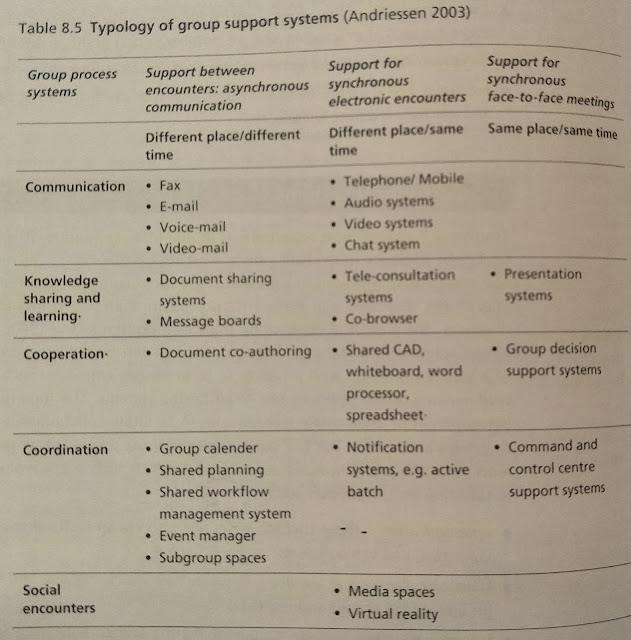GROUP SUPPORT SYSTEM (GSS)
Teamwork is part of most
organizations in one form or another. In response to global and competitive
pressures, organizations are increasingly having their activities
geographically dispersed and using internet technologies to communicate over
long distances. Distance and time differences globally are less of barrier
nowadays with a variety of technologies employed such as e-mail, video conferencing,
mobile phones and co-authoring systems. Besides that, the important feature is
the development of appropriate technologies to facilitate collaboration and
cooperation in groups and teams.
There are 5 basic team processes supported by GSS;-
1. Communication
2. Knowledge sharing and learning
3. Cooperation
4. Coordination
5. Social Interaction/Social encounters
Experience has shown that the success
of GSS relies on more than technology. There a are several noteworthy
guidelines to improve the effectiveness of GSS (Andriessen 2003) à
- If possible, start a group with face-to-face meetings\
- Learn about each other’s backgrounds through “yellow pages”
- Prepare and structure synchronous meeting well,
- Use video links where possible to develop trust and cohesion
- Provide regular information on progress and milestones
- Pay attention to training and intercultural differences
Even though DSS provide a forum for
knowledge sharing, learning and enhanced problem solving, they can also pose
certain challenges for groups. For example;
- ‘free-riders’ relying on others to do all work
- Risk decisions
- Compromised solutions of low quality
- Information overload

No comments:
Post a Comment